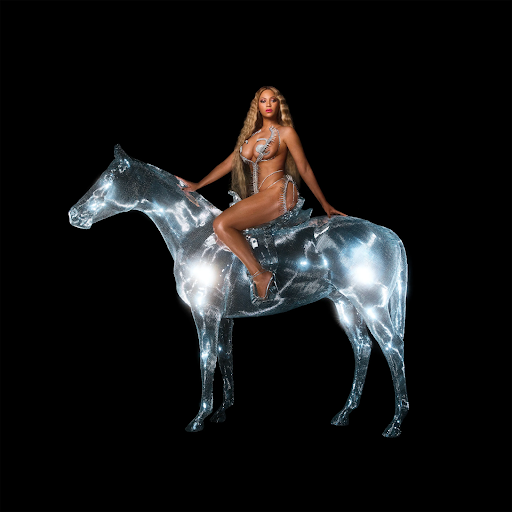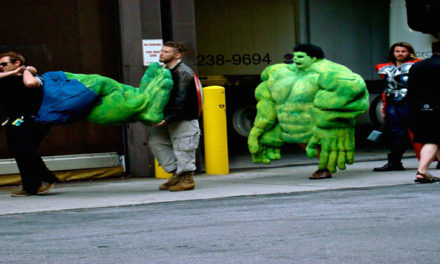Beyoncé released her highly-anticipated “RENAISSANCE” on July 29 — a high-energy, genre-bending album with the club in mind. A pronouncement of positive Black expression and joy, she channels the spirit of disco in these new songs, allowing for celebration after years of national hardship following the 2020 Black Lives Matter movement and the beginning of the COVID-19 pandemic. Last year, the singer said that, after all this isolation and violence, “we are all ready to escape, travel, love, and laugh again” and that she felt “a renaissance emerging.”
In the early 1970s, American society was slowly simmering in a culture of protest in the age of the Vietnam War, Stonewall Riots and Black Power Movement. Subcultures of queer and Black youth were in the midst of a politically trying time, one of resistance and change. Social progress came with the loss of influential leaders and a feeling of fatigue at the expense of the young people leading the way. Improvements were made, but for those in the trenches, an escape was needed. Enter, disco.
In the musical underground, DJs and singers, inspired by Black rhythm, blues music and the culture of dance halls and clubs, created a new sound, unique to its designed location. While not as dense as the burgeoning rock and roll genre, nor as traditional and outwardly political as folk music, disco served a specific purpose. Hua Hsu of The New Yorker wrote that “Disco promised an escape from the concerns and the conflicts of the real world. It was a kind of temporary home, a secret place to dance, to be free, and to author new stories, written in one’s own footsteps.”

Courtesy of Pitchfork.
On “RENAISSANCE,” Beyoncé doesn’t address such societal issues as directly as she did 6 years ago in her previous full-length, solo project, 2016’s “Lemonade.” I believe that the reason for this lack of commentary could be a communal need for unabashed joy. To some degree, everyone has been affected by the COVID-19 pandemic isolation, but communities of color have felt the impacts even more prominently. While Beyoncé and other artists, such as Kendrick Lamar, have noted the pandemic as a time of extreme artistic importance, both reacted very differently in their creative production. While Lamar’s 2022 album addresses generational trauma, Beyoncé finds inspiration in Black art in the wake of hardship on RENAISSANCE, using decades of joyous music to guide her voice.
“RENAISSANCE” employs interesting and novel combinations of musical influence, such as weaving Afrobeat and Electronic styles in both production and vocals on “MOVE” and gospel singing with traditional hip hop soul sampling on “CHURCH GIRL.” Her artistic effort cannot be overstated, and the fact that more than 104 artists collaborated throughout the course of the record is a sign of both stylistic maturity and ambitious experimentation by an artist who doesn’t need to prove her musical brilliance.
Beyoncé is an album artist and a conceptual artist, and although a clear storyline might not exist as one did on “Lemonade,” both musical and conceptual cohesion exist on “RENAISSANCE.” Notably, the tracks flow seamlessly into each other, allowing a consistency of sound like the dynamism and consistent change of a DJ’s set.
For such an established artist, Beyoncé’s experimental approach to creating songs and transitions is fascinating. On “ALIEN SUPERSTAR,” she opens with a sample from 90s DJ Foremost Poets, announcing, “Please do not be alarmed, remain calm…Do not attempt to leave the dance-floor…The DJ booth is conducting a troubleshoot test of the entire system.” In the next song, “CUFF IT,” she dives into a groovy disco anthem, showing off her skillful hook design. After a few listens, it’s going to be nearly impossible to resist the catchy “we gon’ f— up the night” chorus. And, on “BREAK MY SOUL,” she dives into a pure house and techno sound, hitting with the repetitive DJ flips typical of the genres. The track would be perfect to listen to while driving late at night or in a packed dance hall.
I am a hip hop writer at heart, and I would be remiss in reviewing this record without complimenting Beyoncé’s rapping acumen. Beyond her complete mastery of vocal sound and sonic dexterity, much of the writing on “RENAISSANCE” manages to reach, if not at times exceed, her lyrical peaks. I was particularly impressed by the brilliant bar on “ENERGY” where she sings, “I just entered the country with derringers, cause them Karens just turn into terrorists.”
Throughout her career, Beyonce has delved deeper into playing with different styles of a rapping/singing fusion, especially on her collaborative album with her rapper-extraordinaire husband, Jay-Z, “EVERYTHING IS LOVE.” One would be hard-pressed to find a more talented, married couple of rap artists than Beyoncé and Jay-Z, and, as a hardcore Jay-Z fan, it both pains and excites me to see Beyoncé eye the honor of being the best rapper in their marriage with this album.
On “RENAISSANCE,” Beyonce pushes the standards for musical greatness that she set herself. She boasts her vocal range, tool belt of eclectic samples and skill in drawing from her influences, all while still keeping the sound her own. Beyoncé is in her musical Renaissance. On a different, but confident path compared to her past projects, there’s no doubt that the queen of modern pop is alive, well and thriving.
Ben Brodsky (he/him) (25B) is from Scottsdale, Arizona. He has explored hip-hop history since 2019, first on his blog SHEESH hip hop, and now with “Hip Hop Heroes,” a series of essays on narrative in hip-hop. When not writing about Jay-Z, you can find him writing “Brodsky in Between,” an Opinion column on political nuance, graphic designing and playing basketball.




